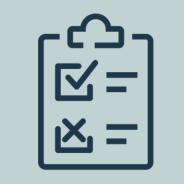COVID-19
Coronaviruses are a large family of viruses that cause respiratory infections.
Respiratory infections affect the parts of the body used in breathing: the nose, throat and lungs. The illnesses caused by coronaviruses range from the common cold to more serious illnesses, like COVID-19.
COVID-19 vaccination
People at higher risk
What to do if you test positive
COVID-19 treatments
Care@home
Staying well
There are lots of things that we can do in our everyday lives to help protect ourselves and others from COVID-19, the flu and other respiratory viruses. These behaviours help keep us all well and can also help limit the spread of respiratory illnesses others.
Learn about how to prepare, plan and protect against respiratory illnesses
Surveillance and reporting
RespTas Report
Update - acute respiratory infection activity in Tasmania
Guidance and resources for businesses
Workplace and higher risk settings
Best practice guidelines
About coronaviruses and COVID-19
COVID-19 is an infectious disease caused by a virus called SARS-CoV-2 that can be severe, particularly for people who are not up to date with vaccination - or have conditions that increase their risk of complications.
Some coronaviruses cause illness in humans, and others cause illness in animals. Rarely coronaviruses that usually only affect animals change to infect and spread among humans.
These new coronaviruses can cause severe disease in humans.
That is what happened with SARS-CoV-2. It started as a coronavirus that infected animals but changed to infect and spread among humans. This also happened with Severe Acute Respiratory Syndrome (SARS), which emerged in 2002, and Middle East Respiratory Syndrome (MERS), which emerged in 2012.


